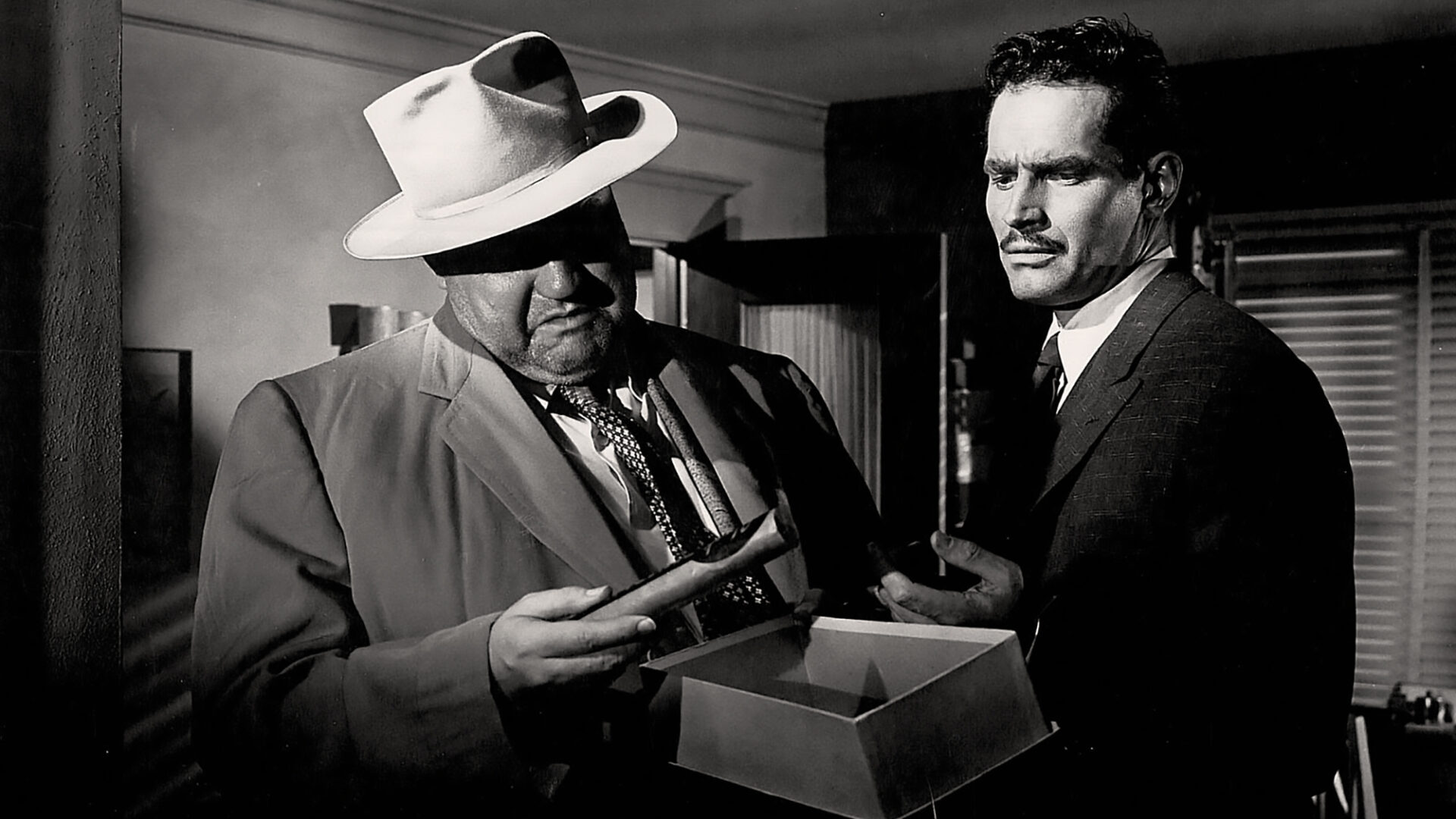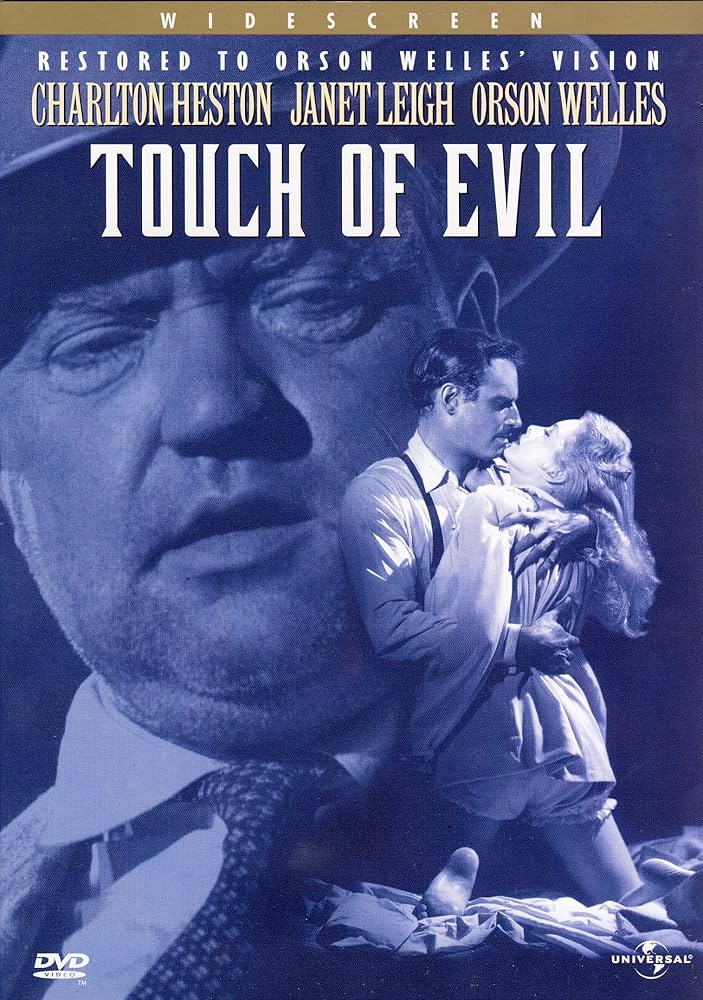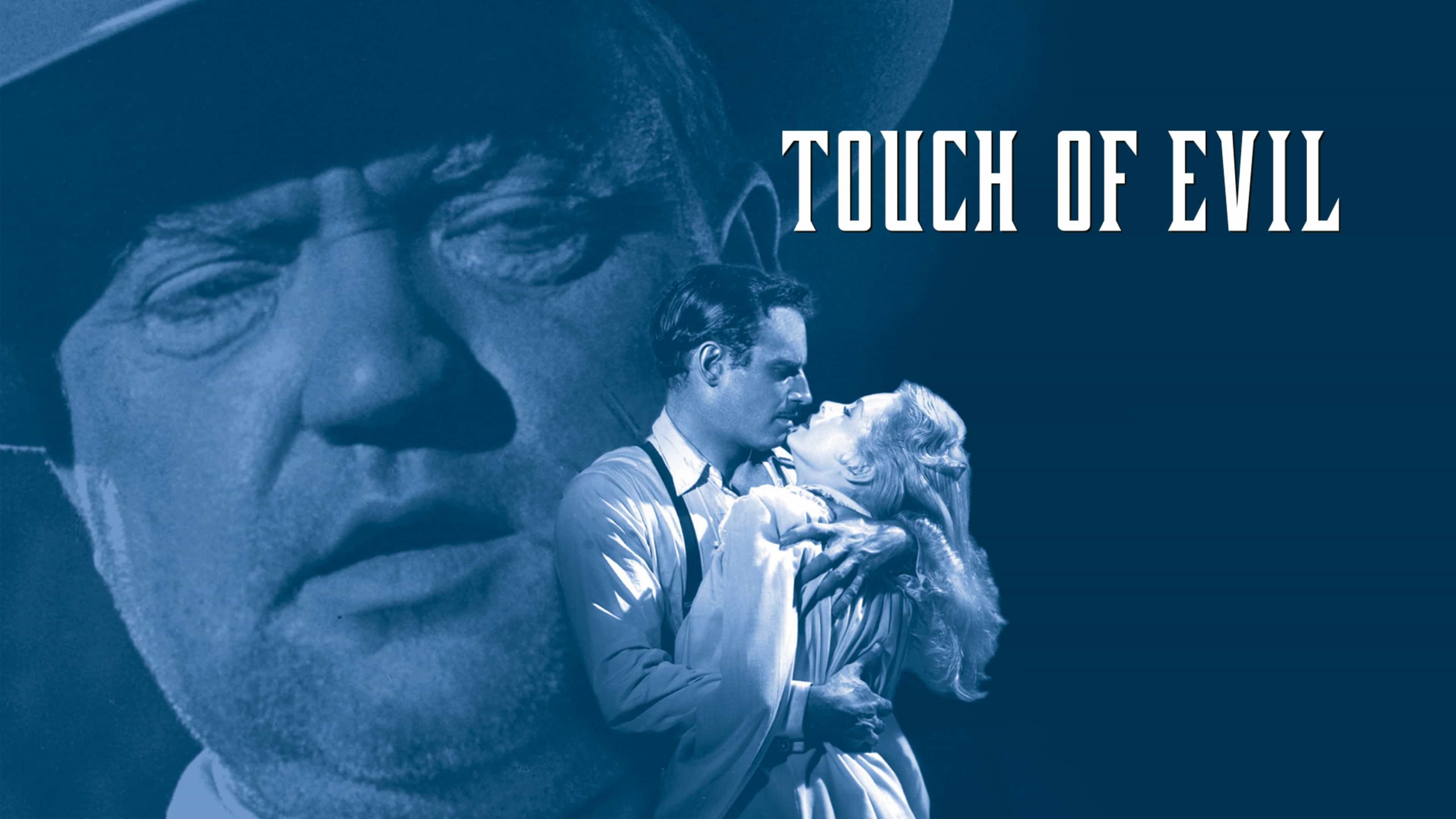Q: What I’d like to know is where did you get the confidence from to make the film with such —
A: Ignorance. Ignorance. Sheer ignorance. You know, there’s no confidence to equal it. It’s only when you know something about a profession, I think, that you’re timid, or careful or —
Of course there is much more to this 1960 BBC interview between Huw Wheldon and Orson Welles. But if ignorance is the greatest teacher, Welles is a wonderful student. Touch of Evil (1958) was his 13th directorial feature and the 10th since Citizen Kane (1941). As he no longer had Gregg Toland to shoot the movie as he had for Kane, Welles went with Russell Metty and not frame was missed.
We open naturally with the greatest opening shot in history: A three minute single tracking shot on the Mexican/American border. The fictional Mexican town of Los Robles is alive at night- cars going across the border with ease, a newlywed couple finally enjoying their time together, and of course the man with the bomb in the trunk.
The newlywed couple, the car, the setting are all too integral. When the bomb goes off our newlywed couple (Charleton Heston and Janet Leigh) are split. Heston is Mike Vargas, a Mexican official investigating local crime. Leigh is Susan Vargas, no slouch herself and insistent on staying close.
And in comes the defining character of a generation- Police Captain Hank Quinlan (Welles). The man is stellar, an ace detective with an unblemished record.
Welles is unrecognizable as a man consumed by his ego to keep a clean record- so much he seems to take his sins out on himself. Though smart he is obese, slovenly, slurry, and pink nosed. He claims to be a good man because he doesn’t drink- but I would get his wife’s opinion first.
Then there is a cavalcade of stars that make crucial turns. Dennis Weaver is the outlandish night porter, Zsa Zsa Gabor is the alluring madame, and Marlene Dietrich as someone with no place else to go (makes since she gets along so well with Quinlan).
The film is about organized crime and the lengths one goes to serve justice (or not). At 95 minutes it is tight, compact, with a focus on the escalation aspect of the story, summed up in a relentless and smart ending. To me this is an exercise in waste, or the complete removal of it. The moral aspect is not lost either- when the forces of good collude with evil, what happens to the people in between? Is this a game with a winner or is that how they see themselves?
Quinlan justifies all his misdeeds because he is “sure” they are guilty. Make the case easy and save the tax payer the trouble.
Grazzi- the sleazy mobster on the bordertown has been playing this game and “serving the community” for decades. The disruptor Vargas is killing a good thing.
Vargas is blind to the lengths his American counterparts would go to seal the case. They have no desire to play in what they only see is a vendetta. He connects dots they don’t even see, only showing his desire for revenge.
Point being either no one is good or everyone is. Shades of gray come in the situation and the person and people are unpredictable. This is really a case of mistaken identity- of people right in front of you. Yet we cannot really know anyone else’s motives, can we? And at times this has dire consequences.

Touch of Evil 1958
Starring:
Orson Welles
Charleton Heston
Janet Leigh
Joseph Calleia
Directed by Orson Welles



